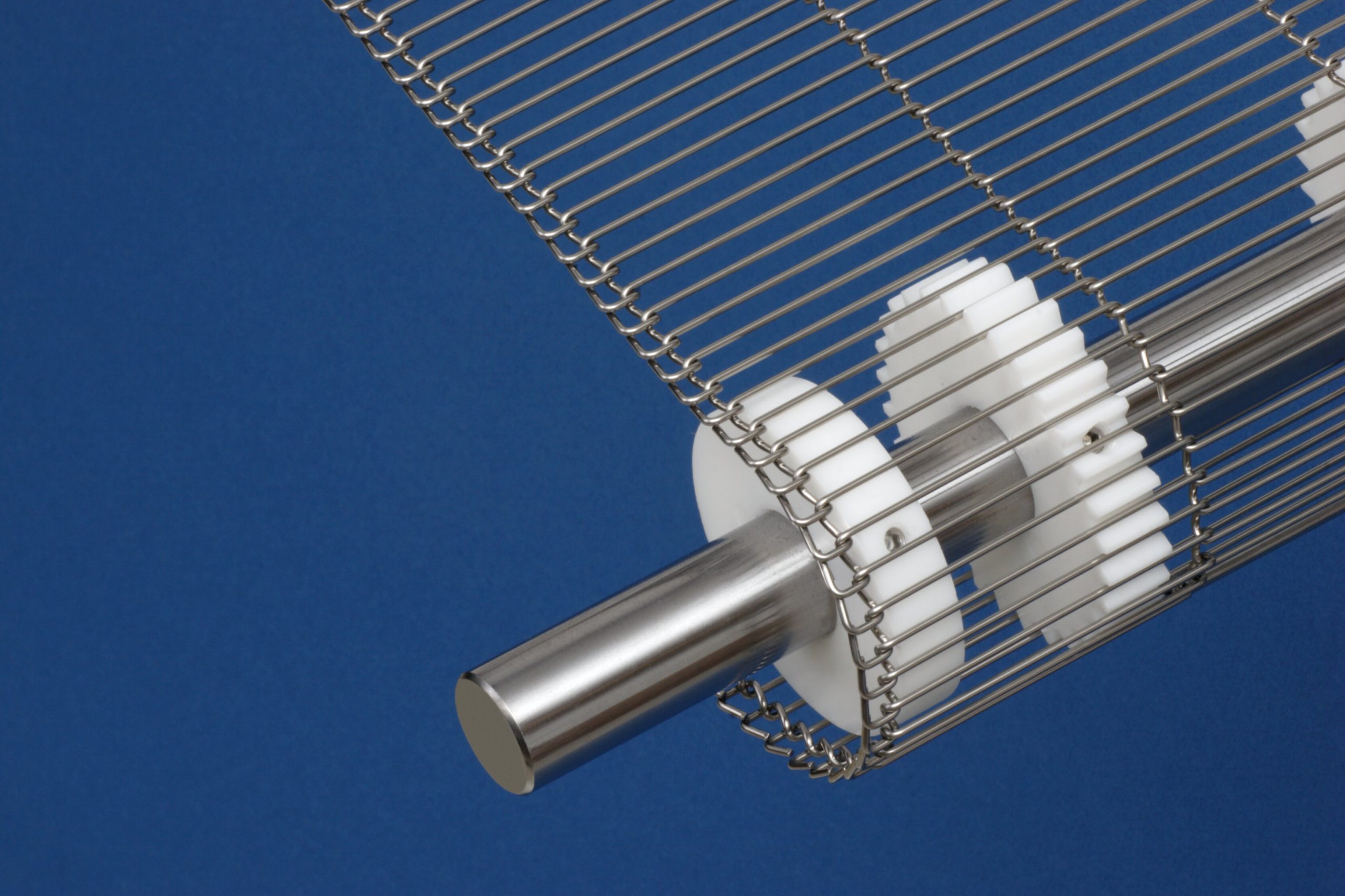
In food processing, lightweight wire conveyor belting is a workhorse of the industry, commonly used to transfer products such as chicken, seafood, vegetables, tortillas, pizza, baked goods and cereal between stations for baking, cooking, coating and frying as well as breading and battering.
Since such processing (and further processing for fully prepared meals) is routine, it can be overlooked as a source of business process improvement. However, implementing best practice standards for food processing, along with best-in-class equipment can improve safety, production and cleanliness.
So, here are four practical, tried and true tips that will help food processors get the most out of their conveyors.
1) Increase production uptime with durable belting
When high speed food processing is required, any downtime to replace wire conveyor belting can reduce production. However, in an effort to boost production, conveyor belting may inadvisably be run up to 160 ft/min in the field.
In such cases, the challenge is assuring belting durability when some portion of the wire could break due to insufficient strength and weight capacity as well as inability to withstand hard use.
Sudden breakage could happen if any of the wire is out of specification, either too soft or too brittle. The demand for quality becomes even higher when you consider that even the smallest diameter wire used in the conveyor belting must be sufficiently strong and durable. Yet, weakness can occur at any point throughout the wire manufacturing process (i.e. heating the wire, drawing it out) and wire belting construction process.
So, all of the wire utilized in the conveyor belting’s construction must not only be designed for destructive bending strength, but also tested for superior durability before shipping.
“For quality control, it is important to pre-test the wire with a destructive bending test,” says Glenn Farrell, CEO of Lumsden Belting, a Lancaster, P.A.-based manufacturer of industrial metal conveyor belts. “This ensures the wire is tough, yet ductile, without being brittle, to meet food processing specifications. The wire itself needs to be of unfailingly, consistent quality to assure long-lasting, conveyor belt life.”
2) Enhance safety with rounded, “snag-free” edges
Traditional wire conveyor belting can have rough, sharp, or even somewhat jagged edges that can inadvertently cut or injure operators, who may brush up against rapidly moving conveyor lines. These edges or exposed wires could also snag clothing, pulling operators along with the conveyor.
For this reason, various best practice safety options have been developed to minimize or eliminate the potential cutting and snagging risk of conventional wire conveyor belting.
3) Ensure clean, tight product transfer
Most food processing facilities are packed with production equipment, and any free space may already be designated for storage, staging, inspection, forklift/operator traffic or future expansion. So, conveyors and conveyor belting that are designed to closely accommodate other material handling equipment are important for efficient use of the production floor.
To fit into space-restricted food processing lines and ensure cleanliness, it is also essential for conveyors and wire belting to integrate as closely as possible with adjacent conveyors, so there is no gap where food could otherwise inadvertently fall or become lodged.
“On the production floor, where space is at a premium, conveyor belting that tightly transfers product [to another conveyor] with a minimal gap improves reliability and plant hygiene,” says Farrell. “Wire belting made without seams further enhances conveyor consistency and sanitary conditions.”
Consistent tracking of the conveyor belting is also important to maintain long-term reliability. For this aspect, belting that is sprocket driven can provide positive drive and consistent tracking. When the belting is designed to articulate around small diameter drive and tail rolls for tight transfers, this ensures gentle handling and constant positioning of the product.
4) Safeguard food safety, cleanliness and easy maintenance
Since food processors must protect food safety along with necessary production, conveyor wire belting must be designed to achieve this.
In this regard, wire belting that utilizes a flow through design can allow for unrestricted wash down and inspection. This minimizes potential blockage between the holes, so the conveyor belting does not plug with debris or residue. Also, to further promote cleanliness, it can be a good idea to utilize stainless-steel belting that can resist corrosion while being easy to clean with foam cleanser.
Finally, to minimize labour and downtime as well as facilitate easy maintenance when repairs are required, it is helpful to utilize conveyor wire belting in which any necessary patches can be spliced directly into it, as needed.
Although food processors use a wide range of material handling equipment, carefully selecting conveyor wire belting that enhances safe, reliable production while cleaning easily and minimizing maintenance will pay off in the bottom line.
Del Williams is a technical writer based in Torrance, California.
Print this page
